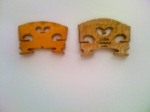Caution. This article is about the use of a legal, but politically incorrect product. Person with immature minds may be offended.
It’s hard to come by. One must be ever vigilant. The time to buy is when you see it. But don’t buy more than you can use in a reasonable amount of time – it will spoil. If you are of a nature to share things, this might change your mind. If you do share, think hard about which of your friends you share with. This stuff is not for just anybody. I am talking about a certain pipe tobacco: Penzance.
 Penance is seriously good tobacco for serious pipe smokers. And if you are not a pipesmoker, Penzance may the stuff that converts you. This is not that bulk tobacco that you find in many fine tobacco shops. This is what is generally referred to as “flake” tobacco, or some people call it “cake” tobacco. It is a mixture of Virginia tobaccos, choice Turkish and Orientals, and some Cyprian Latakia, all hand blended together, then hard pressed and broad cut into thick flakes. I was recently able to procure some and opened it this afternoon in my smoking lounge which some people refer to as my “garage.” I separated two of the thick slices and crumbled them into my pipe bowl and packed it down lightly. Penzance lights easily but one must follow the credo of light thrice, tamp twice. It has a moisture that will cause it to go out if you do mot follow this stricture.
Penance is seriously good tobacco for serious pipe smokers. And if you are not a pipesmoker, Penzance may the stuff that converts you. This is not that bulk tobacco that you find in many fine tobacco shops. This is what is generally referred to as “flake” tobacco, or some people call it “cake” tobacco. It is a mixture of Virginia tobaccos, choice Turkish and Orientals, and some Cyprian Latakia, all hand blended together, then hard pressed and broad cut into thick flakes. I was recently able to procure some and opened it this afternoon in my smoking lounge which some people refer to as my “garage.” I separated two of the thick slices and crumbled them into my pipe bowl and packed it down lightly. Penzance lights easily but one must follow the credo of light thrice, tamp twice. It has a moisture that will cause it to go out if you do mot follow this stricture.
The smoke billows, then lingers, then dissipates, ever so slowly. It hangs there just the right amount of time so as to leave a pleasant memory. If only more people could do this. The flavor and aroma of the burning penzance will transport you. Before long you are looking around for Winston, the service captain to appear through the clouds of smoke with your glass of brandy or single malt on a silver tray. There is no candy in this. No fruit, no rum, no male syrup. Things that are found on a salad bar and buffet at Shoney’s should not be blended with pipe tobacco.
Two slices filled my bowl nicely. Not clear to the top, but about three-quarters the way up. The smoke delivers a delicious tang at first, followed by a bold tobacco flavor, and then finishes with with an earthiness that is best described as dirt – clean dirt. If you smoke it properly and don’t try to conjure up smoke signals, it will burn delightfully cool. Properly packed you should get a good thirty minutes out of it. And you never get the feeling that a cat has been using your tongue as a scratching post.
But it can spoil!. Bulk tobaccos will dry out. That’s easily remedied. Dump it into a bowl, wet your hands and toss it like you are making a salad. I would not advise using an actual salad bowl though, lest someone find a bit of burley among their hearts of romaine. But penzance will go moldy on you. When I first started smoking it, I decided that it was so good that I did not deserve it on a regular basis, and saved it only for special occasions. (That’s the Catholic upbringing in me.) Three weeks after opening the tin, it started growing mold. Solution? Buy it; smoke it.
I can only hope that the CEO of the company that imports this stuff has never made a contribution to a Republican, or the stuff will end up being seized and stored as evidence alongside the rosewood fingerboards taken from the Gibson Guitar Company. I do hope the evidence locker is temperature and humidity controlled.
I’m going back to my smoking lounge now with my tobacco, and my Gibson Hummingbird Guitar. And I’m not going to share.
